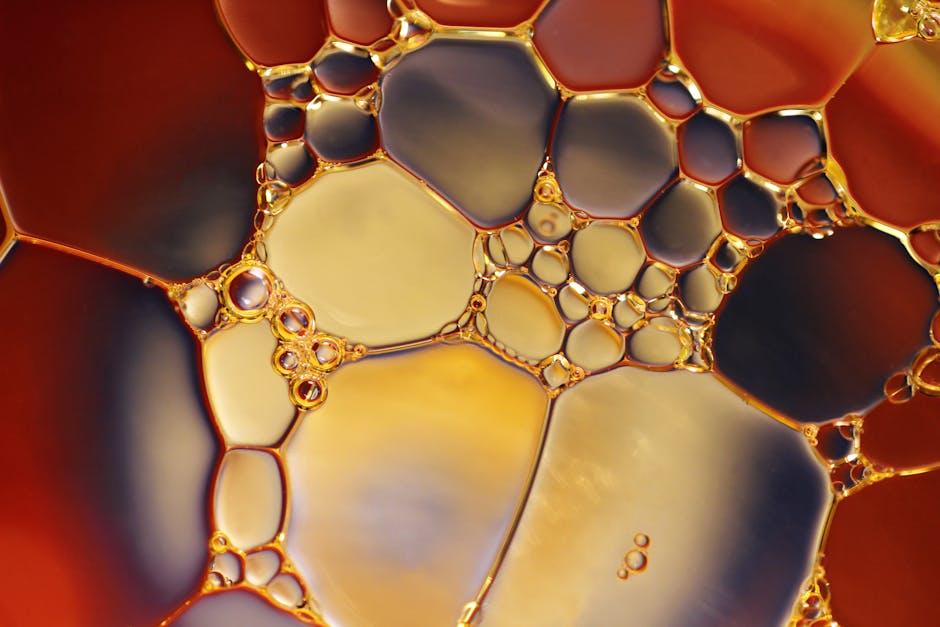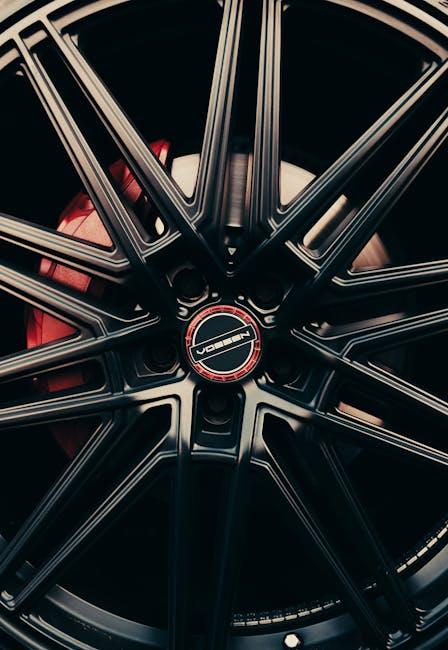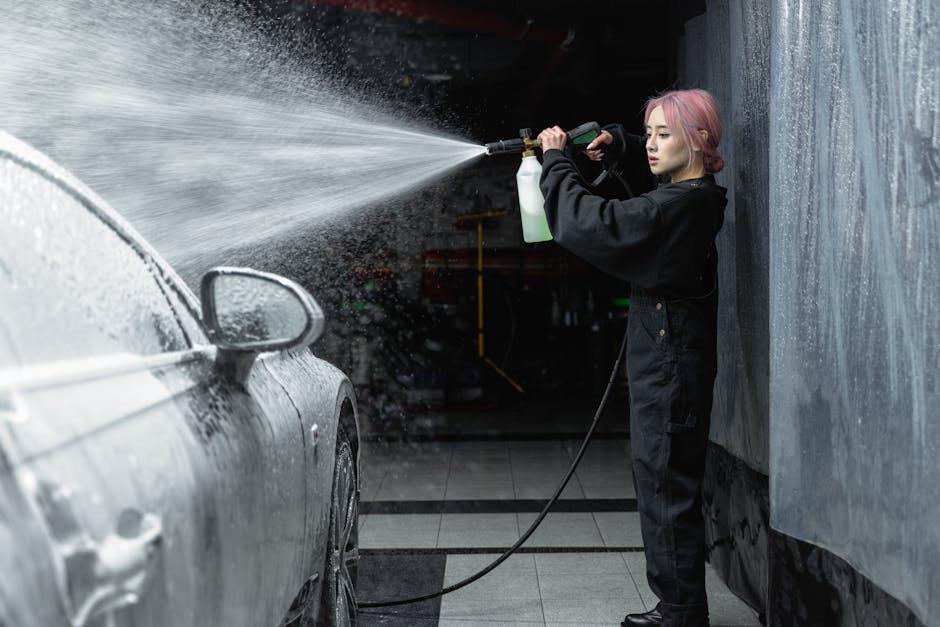In the intricate world of automotive engineering, where every component plays a vital role in the harmony of performance and safety, brake fluid stands as an unsung hero. Though often overlooked, this seemingly simple liquid is essential to the braking system’s effectiveness, directly influencing how a vehicle responds under pressure. Understanding how brake fluid affects performance unlocks a deeper appreciation for what happens beneath the pedal—and why this humble fluid is critical to everything from everyday driving to high-speed precision stopping. In this article, we’ll explore the science behind brake fluid and uncover how its qualities shape the very essence of vehicular control.
Table of Contents
- Understanding the Role of Brake Fluid in Vehicle Safety
- The Science Behind Brake Fluid and Heat Management
- How Brake Fluid Quality Influences Stopping Power
- Recognizing Signs of Brake Fluid Degradation
- Choosing the Right Brake Fluid for Optimal Performance
- Maintenance Tips to Preserve Brake Fluid Efficiency
- Q&A
- Final Thoughts

Understanding the Role of Brake Fluid in Vehicle Safety
Brake fluid is the unsung hero behind every smooth stop and swift response on the road. It acts as the vital medium transmitting force from the brake pedal to the brake components, turning your foot’s pressure into motion that stops your vehicle. Its ability to maintain consistent hydraulic pressure, especially under high temperature conditions, is what ensures brake pads grip firmly against discs or drums. When brake fluid fails or degrades, it can introduce air bubbles or moisture, which compresses and reduces braking efficiency — a scenario that could lead to dangerous delays in stopping times.
Understanding the properties of brake fluid helps highlight its critical role:
- Boiling point: High boiling points prevent vapor lock during extreme braking, maintaining reliability.
- Corrosion resistance: Protects brake system components from rusting and deteriorating.
- Compatibility: Works seamlessly with seals and components to avoid leaks or damage.
| Property | Importance | Ideal Characteristic |
|---|---|---|
| Boiling Point | Avoids vapor formation | Above 230°C |
| Viscosity | Ensures quick response | Low at low temperatures |
| Moisture Absorption | Prevents corrosion | Minimal absorption |

The Science Behind Brake Fluid and Heat Management
Brake fluid plays a crucial role in translating pedal pressure into effective stopping power, but its performance hinges significantly on its ability to manage heat. When brakes are applied, friction converts kinetic energy into heat, raising the temperature within the brake system. High temperatures can degrade brake fluid, compromising its viscosity and boiling point, which in turn reduces its ability to transmit force effectively. Heat-resistant brake fluids maintain consistent performance even under extreme thermal conditions, minimizing the risk of vapor lock—a dangerous condition where the fluid vaporizes, causing brake fade or complete brake failure.
The science of brake fluid and heat management centers around key properties such as boiling point, viscosity stability, and hygroscopicity (the tendency to absorb moisture). Below is a comparison of common brake fluids highlighting these critical factors:
| Brake Fluid Type | Dry Boiling Point (°C) | Wet Boiling Point (°C) | Hygroscopic Nature |
|---|---|---|---|
| DOT 3 | 205 | 140 | High |
| DOT 4 | 230 | 155 | Moderate |
| DOT 5.1 | 270 | 180 | Moderate |
| DOT 5 (Silicone-based) | 260 | Not Applicable | Low |
- Boiling Point: Crucial for withstanding repeated heavy braking without vaporizing.
- Moisture Absorption: Over time, brake fluids absorb water from the environment, lowering their boiling point and reducing efficiency.
- Viscosity: Proper flow characteristics ensure the fluid can transfer pressure instantly, even in cold temperatures.

How Brake Fluid Quality Influences Stopping Power
Brake fluid acts as the unsung hero in your vehicle’s braking system, translating your foot’s pressure into kinetic energy that halts your car. The quality of this hydraulic fluid directly affects how efficiently and safely your vehicle stops. Low-grade or deteriorated fluid can compromise the system’s responsiveness by introducing air bubbles or moisture inside the brake lines, resulting in a spongy feel on the pedal and extended stopping distances.
The performance degradation due to poor-quality fluid can be subtle but dangerous—especially under extreme conditions like heavy braking or wet weather. Here’s what makes premium brake fluid superior:
- Higher boiling point: Resists vaporization during intense braking.
- Better moisture resistance: Reduces corrosion and fluid degradation.
- Stable viscosity: Ensures consistent pressure transfer regardless of temperature changes.
| Fluid Type | Dry Boiling Point (°C) | Wet Boiling Point (°C) | Recommended Usage |
|---|---|---|---|
| DOT 3 | 205 | 140 | Standard passenger vehicles |
| DOT 4 | 230 | 155 | High-performance and modern cars |
| DOT 5.1 | 260 | 180 | Racing and heavy-duty vehicles |

Recognizing Signs of Brake Fluid Degradation
Over time, brake fluid can lose its effectiveness, which directly impacts how your vehicle stops. One clear indicator of fluid degradation is a spongy or soft brake pedal, which signals the presence of moisture or air in the system. Additionally, if you notice a decrease in braking responsiveness or longer stopping distances, don’t ignore these warning signs. Dark, cloudy, or contaminated brake fluid seen through the reservoir can also be a red flag, suggesting the fluid has absorbed dirt and moisture, reducing its ability to withstand high temperatures.
Pay attention to subtle clues that might point to brake fluid problems:
- Brake warning light: Often linked to fluid level or pressure issues.
- Unusual noises: Sounds like squealing or grinding might indicate fluid-related wear.
- Brake pedal travel: Excessive travel or sinking pedal can result from fluid breakdown.
| Symptom | Possible Cause | Recommended Action |
|---|---|---|
| Spongy pedal | Moisture contamination | Flush and replace brake fluid |
| Brake warning light | Low fluid level or pressure drop | Inspect system and top up fluid |
| Dark fluid color | Old, contaminated fluid | Complete brake fluid change |

Choosing the Right Brake Fluid for Optimal Performance
Finding the perfect brake fluid is more than just choosing a type; it’s about matching your driving habits and vehicle requirements to the fluid’s unique characteristics. Brake fluids vary primarily by their chemical base—such as glycol-ethers or silicone—and each provides different boiling points and moisture resistance. Drivers who frequently tackle steep hills, carry heavy loads, or engage in spirited driving benefit significantly from fluids with higher dry and wet boiling points, ensuring consistent pedal feel and reliability in critical moments.
When selecting brake fluid, consider the following factors to optimize performance:
- Compatibility: Ensure the fluid matches your vehicle manufacturer’s specifications to avoid seal damage.
- Boiling Point: Higher boiling points reduce the risk of vapor lock under stress.
- Moisture Absorption: Fluids with better moisture tolerance prolong brake system life.
- Maintenance Interval: Some advanced fluids allow longer periods between changes.
| Brake Fluid Type | Dry Boiling Point | Wet Boiling Point | Common Use |
|---|---|---|---|
| DOT 3 | 205°C (401°F) | 140°C (284°F) | Everyday vehicles |
| DOT 4 | 230°C (446°F) | 155°C (311°F) | Performance and modern cars |
| DOT 5 | 260°C (500°F) | Not applicable | Military and classic cars (silicone-based) |
| DOT 5.1 | 270°C (518°F) | 180°C (356°F) | High-performance vehicles |

Maintenance Tips to Preserve Brake Fluid Efficiency
To ensure your brake fluid remains at peak performance, regular checks are essential. Over time, brake fluid can absorb moisture from the air, leading to reduced boiling points and corrosion within the brake system. This moisture buildup not only compromises braking efficiency but can also cause costly damage to internal components. Checking fluid levels monthly, looking for discoloration, and adhering to the manufacturer’s recommended replacement interval will keep your brakes responsive and safe.
- Use only the specified brake fluid type as mixing can impair function
- Bleed brake lines regularly to remove trapped air and moisture
- Store brake fluid properly in a sealed container away from humidity
- Inspect for leaks to prevent contamination and fluid loss
| Service Interval | Brake Fluid Maintenance Task |
|---|---|
| Every 12 months | Brake fluid inspection & top-up |
| Every 2 years | Complete brake fluid replacement |
| As needed | Brake system bleeding |
Q&A
Q&A: How Brake Fluid Affects Performance
Q1: What role does brake fluid play in a vehicle’s braking system?
A1: Brake fluid is the lifeblood of your braking system. It transmits the force from your brake pedal to the brake pads or shoes, enabling your vehicle to slow down or stop. Without it, the hydraulic system can’t function properly, making effective braking impossible.
Q2: How does the quality of brake fluid impact braking performance?
A2: The quality of brake fluid directly affects how smoothly and responsively your brakes perform. High-quality brake fluid maintains consistent pressure under intense heat and stress, ensuring your brakes respond immediately. Poor or contaminated fluid can lead to spongy brakes, reduced stopping power, or even brake failure.
Q3: Can brake fluid age or degrade over time?
A3: Absolutely. Brake fluid is hygroscopic, meaning it absorbs moisture from the air over time. This moisture lowers the fluid’s boiling point, making it more prone to vaporizing during heavy braking — a dangerous condition known as “brake fade.” Regularly changing brake fluid keeps your braking system reliable.
Q4: How does moisture in brake fluid affect braking?
A4: When moisture accumulates in brake fluid, it reduces the fluid’s ability to withstand high temperatures. During hard braking, the fluid can boil, creating gas bubbles that compress and diminish hydraulic pressure. This leads to a soft brake pedal and increased stopping distance, severely compromising safety.
Q5: Are all brake fluids the same, or are there different types?
A5: Not all brake fluids are created equal. There are several types — DOT 3, DOT 4, DOT 5, and DOT 5.1 — each with different chemical compositions and performance characteristics. Using the wrong type can damage your braking system or affect performance, so always refer to your vehicle manufacturer’s recommendations.
Q6: How often should brake fluid be changed to maintain optimal performance?
A6: Most manufacturers suggest changing brake fluid every two years or 30,000 miles, but this can vary depending on usage and driving conditions. Regular inspections and maintenance help ensure your brake fluid remains clean, dry, and effective.
Q7: Can upgrading brake fluid improve brake performance?
A7: Upgrading to a higher boiling point brake fluid can benefit drivers who push their vehicles hard—such as track enthusiasts or heavy-load haulers. These fluids resist vaporization under extreme heat, providing better pedal feel and consistent braking in demanding situations.
Q8: What are the signs that brake fluid might be affecting your brakes?
A8: Warning signs include a soft or spongy brake pedal, longer stopping distances, or unexpected brake performance under heavy use. If you notice any of these symptoms, it’s wise to have your brake fluid and overall braking system inspected promptly.
Q9: Is brake fluid maintenance something a car owner can do themselves?
A9: While some car owners with mechanical skills can change brake fluid themselves, it involves handling hazardous materials and bleeding the brakes properly to avoid air bubbles. Many prefer to leave it to professionals to ensure safety and system integrity.
Q10: In summary, why is brake fluid critical for brake performance?
A10: Brake fluid is the invisible hero ensuring your brakes respond reliably and safely. Its condition impacts pedal feel, stopping power, and overall braking efficiency. Keeping brake fluid fresh, dry, and appropriate to your vehicle is essential for optimal braking performance and, ultimately, your safety on the road.
Final Thoughts
In the intricate dance of stopping power, brake fluid plays a silent yet pivotal role. It’s not just a clear liquid tucked away in your car’s master cylinder; it’s the lifeblood that ensures every press of the pedal translates into precise, reliable performance. Understanding how brake fluid affects your braking system empowers you to maintain that essential connection between driver and machine. So next time you think about performance upgrades or routine maintenance, remember that sometimes, the smallest elements make the biggest difference—brake fluid is one of those vital, unseen heroes keeping you safe and in control on the road.
